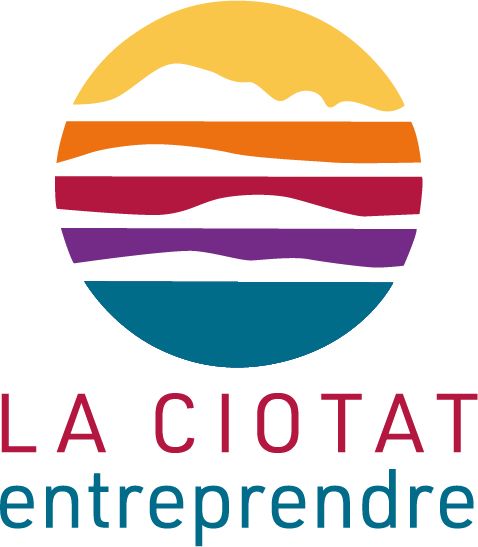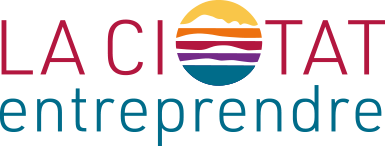
Chauncey Howden
À propos Chauncey Howden
<b>The Recruitment Process In 7 Steps ᐈ StaffingPartner</b> <a href="https://www.theknowledgeacademy.com/blog/what-is-recruitment/"></a>In the busy and ever-evolving world of recruitment, understanding the critical steps in the <a href="https://www.execafrica.com/">recruitment</a> procedure is crucial for companies and recruitment firms. The recruitment process is not practically filling vacant positions; it's a nuanced journey that includes a series of critical steps to discover the best candidate who not just possesses the required abilities however also fits seamlessly into the company culture. 73% of possible prospects are passive job hunters, and a significant 87% of these prospects are open to brand-new job opportunities provided by active recruitment. In this detailed article, we will dive deep into the seven essential steps in the <a href="https://www.execafrica.com/cv-writing/">recruitment</a> procedure. From the initial planning and strategy formula to the last onboarding of prospects, each action will be taken a look at in information. We'll explore best practices, common mistakes to prevent, and how innovation can be leveraged to improve performance. Whether you're a seasoned HR professional or a company owner handling recruitment tasks, this short article aims to be your go-to guide for recruitment. Why is the Recruitment Process Important? The recruitment procedure is the foundation of a acquisition method, straight affecting its long-lasting success and competitiveness. This multi-step treatment is not simply about filling vacancies; it's a nuanced mix of determining organizational requirements, drawing in top-tier skill, and making data-driven decisions to onboard individuals who not just have actually the needed ability however likewise line up with the business's culture and vision. Unemployment figures have increased worldwide, emphasizing the value of reliable recruitment techniques. A well-executed recruitment procedure uses many advantages, from cost-efficiency and legal compliance to employee retention and improved company branding. Given its pivotal role in shaping the labor force and, by extension, the future of the organization, the significance of the recruitment procedure can not be overstated. Here are some reasons that the recruitment procedure is so essential: Quality of Talent - Skill Matching. A well-designed recruitment procedure makes sure that the prospects' skills are lined up with the task requirements. - Cultural Fit. The procedure can also examine how well a prospect fits into the company culture, which is important for long-lasting success. Efficiency - Time-Saving. A structured recruitment process can significantly decrease the hiring time, allowing the organization to fill jobs faster. - Cost-Effective. Efficient recruitment processes can lower expenses associated with bad hires, training, and turnover. Competitive Advantage - Talent Pool. A great recruitment process can bring in premium candidates, offering the company a competitive edge. - Employer Branding. The recruitment procedure is frequently a candidate's first interaction with the organization, and a positive experience can enhance the company's credibility. Legal Compliance - Fairness. A standardized recruitment procedure assists guarantee that employing decisions are made fairly and are compliant with employment laws. - Documentation. Proper recruitment procedures provide a record that can be helpful in case of legal disagreements. Strategic Alignment - Business Goals. The recruitment procedure can be lined up with the company's strategic objectives, guaranteeing that the right individuals are hired for the ideal functions. - Future Planning. A robust recruitment procedure can likewise help in succession planning and future development. Employee Retention - Job Satisfaction. When the recruitment process is extensive, candidates have a clearer understanding of the function and are most likely to be pleased with their jobs. - Reduced Turnover. Effective recruitment can cause higher worker retention rates, which benefits organizational stability. What is Encompassed in the HR Recruitment Process? The Human Resources (HR) recruitment process is a thorough and tactical method that goes beyond merely filling jobs. It's an important organizational function that looks for to align the workforce with the company's objectives and long-term vision. This multi-step treatment is created to recognize, draw in, and ultimately employ individuals who not only have the required skills and certifications however likewise fit well with the business's culture. The process is often cyclical, involving ongoing efforts to optimize talent acquisition and retention. 7 Steps to Consider an Effective Recruitment Process The recruitment process is a critical function that has a direct effect on a company's efficiency, culture, and long-lasting success. A well-executed recruitment process not only fills jobs but also aligns the labor force with the company's strategic objectives. Given the competitive landscape and the ever-changing dynamics of the job market, having a streamlined and efficient recruitment procedure is more vital than ever. Below are the 7 vital steps for an effective recruitment process, each designed to ensure you bring in, examine, and onboard the finest skill for your organization. Determine the Staffing Requirements Determining staffing requirements is a crucial and strategic process that involves several essential actions to ensure that your organization or customer has the appropriate variety of individuals with the ideal abilities at the correct time. This procedure requires a deep understanding of the existing workforce abilities, a clear projection of future company demands, and the advancement a strategic strategy to bridge any spaces between existing resources and future requirements. It's a dynamic process that lines up human resources planning with the tactical instructions of the company, taking into consideration different internal and external aspects that can influence workforce dynamics. Adequate staffing is not practically filling jobs; it's about anticipating changes, being proactive in talent management, and making sure that the organization is constantly prepared to meet its goals with a competent and prepared workforce. Create Job Descriptions Creating engaging task descriptions is a fundamental action in the recruitment procedure. A well-crafted job description serves numerous functions: it assists attract suitable candidates, sets clear expectations for candidates, and functions as a guide for employee efficiency evaluations. It acts as a foundation for developing interview questions, conducting efficiency reviews, and setting standards for compensation and promos. Moreover, a clear task description can likewise be a tool for compliance, guaranteeing that all activities line up with legal and professional standards. It encapsulates the essence of the task in a method that speaks straight to the preferred audience, making it a crucial file that underpins the strategic alignment of HR activities with broader company objectives. Formulate Your Recruitment Approach Formulating a recruitment method is a tactical venture that needs careful preparation and execution. It includes lining up the recruitment method with the overall organization objectives, comprehending the intricacies of the market and the offered skill swimming pool, and developing a clear worth proposal for possible candidates. A well-defined recruitment technique not only determines and attracts the finest candidates but likewise enhances the recruitment procedure, improves the candidate experience, and enhances the employer brand. It's a detailed process integrating best practices, ingenious sourcing techniques, and robust assessment methods to develop a labor force that will drive the organization's success. Screen and Shortlist Candidates Screening and shortlisting candidates is a crucial stage in the recruitment process, intending to efficiently identify the most suitable candidates for additional assessment and interviews. This stage requires an eager eye for detail and an objective approach to evaluating the certifications, experience, and capacity of each candidate versus the function's requirements. It's a delicate balance in between thoroughness and performance, guaranteeing that the process moves forward with a pool of prospects who are not just qualified on paper but likewise most likely to be successful and contribute positively to the company's culture and goals. This action sets the tone for the subsequent phases of recruitment and can substantially influence the quality of the final employing choice. Interviewing Stage The speaking with phase is a pivotal point in the <a href="https://www.execafrica.com/training-development/">recruitment</a> procedure, where potential prospects are examined extensive to determine their viability for the role and fit within the organization. This stage involves interacting with the prospects to gain insights into their skills, experience, personality, and professional disposition. During the interviews, candidates are usually asked technical, behavioral, and situational concerns. Technical concerns examine their hard skills and efficiency in the particular tools or techniques relevant to the job. Behavioral questions intend to understand how the candidate has actually acted in previous situations, which can show their future behavior and alignment with the business's worths. Situational questions present hypothetical scenarios to examine the candidate's problem-solving and decision-making abilities. Extend the Job Offer Extending a task deal is the culmination of the recruitment procedure. It requires a thoughtful and orderly approach to guarantee a favorable experience for the prospect and to make the most of the possibilities of the offer being accepted. This action is not simply a procedure however a critical minute that can substantially influence a candidate's choice to join your company. It's a chance to declare the prospect's worth to the business, to highlight the advantages and potential for growth within the function, and to establish the foundations of a strong working relationship. A well-handled job deal shows the business's professionalism. It can be a deciding factor for candidates picking between several offers, ensuring that the organization secures its leading option for the position. Employee Onboarding Employee onboarding is an extensive process that incorporates brand-new hires into the business and sets them up for success. It surpasses mere orientation; efficient onboarding is designed to adapt new employees to the company culture, introduce them to their roles, and establish key relationships within the group and organization. The onboarding process generally includes organized activities and touchpoints covering a number of weeks or months, making sure new employees feel invited, informed, and equipped to perform their tasks. This procedure frequently includes administrative tasks such as completing new hire paperwork. Still, it includes in-depth training on job obligations, introductions to colleagues and management, and immersion into the company's values and practices. How to Efficiently Oversee the Recruitment Process? Overseeing the recruitment procedure efficiently is vital for ensuring that you draw in and hire the very best skill readily available. Given your function at StaffingPartner, a recruitment company concentrating on numerous services like IT recruitment, executive search, and prospect technical evaluation, you're currently acquainted with the complexities involved. Here are some sophisticated techniques tailored to your competence: Planning and Strategy - Client Requirement Analysis. Understand the client's needs in depth. This includes not just the job description however also the business culture, project timelines, and budget constraints. - Technology Utilization. Leverage AI and artificial intelligence algorithms for initial prospect screening, particularly for IT roles. This can assist in evaluating technical skills effectively. Sourcing and Engagement - Multi-Channel Sourcing. Use task boards, social networks, and your existing database to source candidates. Given your team's expertise in sourcing, consider sophisticated strategies like Boolean search. - Personalized Outreach. Customize your communication based upon the candidate's background and the function they are being thought about for. This adds an individual touch and increases engagement rates. Assessment and Interviews - Technical Assessments. Since you offer candidate technical evaluation services, make sure these align with the customer's technical requirements. Use coding tests, case studies, or simulation workouts. - Behavioral Interviews. Use competency-based interviews to assess soft abilities and cultural fit. This is crucial for executive search and senior functions. Presentation to Client - Candidate Profiles. Create thorough candidate profiles that include not just the resume however also assessment ratings, interview notes, and any other pertinent data. - Client Briefing. Prepare a comprehensive instruction for the client, explaining why each prospect is a great fit for the function. Use data and metrics to back your suggestions. Feedback and Iteration - Client Feedback. After the client interviews the prospects, get detailed feedback to understand what worked and what didn't. - Process Optimization. Use this feedback for constant improvement. Update your sourcing methods, assessment approaches, or any other tweaking procedure. Tools and Software - Applicant Tracking System (ATS). Use an ATS that incorporates well with other tools you utilize, like assessment platforms and CRM systems. - Analytics. Use analytics tools to track KPIs like time-to-hire, cost-per-hire, and quality-of-hire. To Summarize<a href="https://www.theknowledgeacademy.com/blog/what-is-recruitment/"></a> The recruitment process is a multi-faceted journey that requires careful planning, execution, and assessment. The seven steps outlined in this short article - specifying the role, planning your recruitment strategy, sourcing prospects, screening applications, conducting interviews, evaluating prospects, and making the last offer - function as a comprehensive guide to make sure that you draw in, determine, and secure the best talent for your company. StaffingPartner is a global recruitment company focusing on acquiring top-tier technology skill through a thoroughly crafted strategy in the United States and Europe. Our offerings are crafted to supply affordable services, accelerate your group's expansion, and guarantee constant productivity. Leveraging our extensive understanding in the IT sector, we are proficient at identifying the best prospects for your team, no matter their geographical area worldwide.
Phone # :
Mobile # :
Post utilisateur


